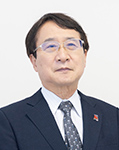Acute-phase effects of single-time topical or systemic corticosteroid application immediately after hot water-induced burn injury of various grades
Article ID: 14
Vol 3, Issue 1, 2019
Vol 3, Issue 1, 2019
VIEWS - 7453 (Abstract)
Abstract
The aim of this study is to evaluate the effects of corticosteroid application on each grade of burn, and to clarify the underlying mechanisms of the effects, especially in its acute inflammatory phase. To generate three-graded burn models (epidermal burn, or EB; dermal burn, or DB; and subcutaneous burn, or SB), hot water was applied on the back skin of Hos:HR-1 mice. Strongest-class (or high-potent) corticosteroid ointment (DD group) or petrolatum (control group) was applied on the back immediately after the hot water application on mice. Prednisolone sodium succinate (PDN group), 1 mg/kg was orally applied immediately after the hot water application on mice. The mice were sacrificed 1–3 days after hot water application, and the lesional skin samples were provided for histological assessment to enumerate the number of infiltrating inflammatory cells. The mRNA expression levels of inflammatory cytokines (IL-1b, TNFa, IL-6 and IFNg) in the lesional skin were also investigated. As a result, corticosteroid application suppressed the number of infiltrating inflammatory cells in the DD group of EB and SB at the early phase, and in DB at all time-points. However, the number of infiltrating inflammatory cells increased in EB on day 3. Expression of cytokines was generally suppressed in the PDN group of SB. In the cases of EB and DB, some cytokines had decreased but many of the others showed increased expression. In conclusion, the anti-inflammatory effects of corticosteroids are not simple inhibitory effects on inflammatory cell infiltration and cytokine production, but exert more complicated effects in vivo.
Keywords
burn; corticosteroid; inflammatory cell infiltration; cytokine; mouse model
Full Text:
PDFReferences
- Singer AJ, Clark RAF. Cutaneous wound healing. N Engl J Med 1999; 341: 738–746. doi: 10.1056/NEJM199909023411006.
- Martin P. Wound healing-aiming for perfect skin regeneration. Science 1997; 276(5309): 75–81. doi: 10.1126/science.276.5309.75.
- Fukano K, Nukatsuka H, Takuma K, et al. 創傷被覆材の評価のためのラットII度熱傷モデル (Japanese) [A second degree burn model in rats to evaluate wound dressings]. J J Burn Inj 2001; 27(5): 242–251.
- Lederer JA, Rodrick ML, Mannick JA. The effect of injury on the adaptive immune response. Shock 1999; 11(3): 153–159. doi: 10.1097/00024382-199903000-00001.
- Wood LC, Elias PM, Calhoun C, et al. Barrier disruption stimulates interleukin-1 alpha expression and release from a pre-formed pool in murine epidermis. J Invest Dermatol 1996; 106(3): 397–403. doi: 10.1111/1523-1747.ep12343392.
- Hu Y, Liang D, Li X, et al. The role of interleukin-1 in wound biology. Part II: In vivo and human translational studies. Anesth Analg 2010; 111(6): 1534–1542. doi: 10.1213/ANE.0b013e3181f691eb.
- Hübner G, Brauchl M, Smola H, et al. Differential regulation of proinflammatory cytokines during wound healing in normal and glucocorticoid-treated mice. Cytokine 1996; 8(7): 548–556. doi: 10.1006/cyto.1996.0074.
- Chaudry IH, Ayala A. Mechanism of increased susceptibility to infection following hemorrhage. Am J Surg 1993; 165(2): 59S–67S. doi: 10.1016/S0002-9610(05)81208-5.
- Weissman C. The metabolic response to stress: An overview and update. Anesthesiology 1990; 73: 308–327. doi: 10.1097/00000542-199008000-00020.
- Abraham E, Freitas AA. Hemorrhage produces abnormalities in lymphocyte function and lymphokine generation. J Immunol 1989; 142(3): 899–906.
- Biffl WL, Moore EE, Moore FA, et al. Interleukin-6 in the injured patient: Marker of injury or mediator of inflammation? Ann Surg 1996; 224(5): 647–664. doi: 10.1097/00000658-199611000-00009.
- McFarland-Mancini MM, Funk HM, Paluch AM, et al. Differences in wound healing in mice with deficiency of IL-6 versus IL-6 receptor. J Immunol 2010; 184(12): 7219–7228. doi: 10.4049/jimmunol.0901929.
- Lin ZQ, Kondo T, Ishida Y, et al. Essential involvement of IL-6 in the skin wound-healing process as evidenced by delayed wound healing in IL-6-deficient mice. J Leukoc Biol 2003; 73: 713–721. doi: 10.1189/jlb.0802397.
- Mast BA, Schultz GS. Interactions of cytokines, growth factor, and proteases in acute and chronic wounds. Wound Repair Regen 1996; 4(4): 411–420. doi: 10.1046/j.1524-475X.1996.40404.x.
- Guo Y, Dickerson C, Chrest FJ, et al. Increased levels of circulating interleukin 6 in burn patients. Clin Immunol Immunopathol 1990; 54(3): 361–371. doi: 10.1016/0090-1229(90)90050-Z.
- Xing Z, Gauldie J, Cox G, et al. IL-6 is an antiinflammatory cytokine required for controlling local or systemic acute inflammatory responses. J Clin Investig 1998; 101(2): 311–320. doi: 10.1172/JCI1368.
- Schoenborn JR, Wilson CB. Regulation of interferon-γ during innate and adaptive immune responses. Adv Immunol 2007; 96: 41–101. doi: 10.1016/S0065-2776(07)96002-2.
- Gosain A, Gamelli RL. A primer in cytokines. J Burn Care Rehabil 2005; 26(1): 7–12. doi: 10.1097/01.BCR.0000150214.72984.44.
- Gamelli RL, He L, Liu H. Marrow granulocyte-macrophage progenitor cell response to burn injury as modified by endotoxin and indomethacin. J Trauma 1994; 37(3): 339–346. doi: 10.1097/00005373-199409000-00002.
- Cioffi WG. What’s new in burns and metabolism. J Am Coll Surg 2001; 92(2): 241–254. doi: 10.1016/S1072-7515(00)00795-X.
- Göebel A, Kavanagh E, Lyons A, et al. Injury induces deficient interleukin-12 production, but interleukin-12 therapy after injury restores resistance to infection. Ann Surg 2000; 231(2): 253–261. doi: 10.1097/00000658-200002000-00015.
- DiPiro JT, Howdieshell TR, Goddard JK. Association of interleukin-4 plasma levels with traumatic injury and clinical course. Arch Surg 1995; 130(11): 1159–1162. doi: 10.1001/archsurg.1995.01430110017004.
- Takano K, Muto S, Mouri N, et al. The effect of corticosteroids on cytokine levels in the healing wound. Biotherapy 1998; 12(5): 624–626.
- Faist E, Kupper TS, Baker CC, et al. Depression of cellular immunity after major injury. Its association with posttraumatic complications and its reversal with immunomodulation. Arch Surg 1986; 121(9): 1000–1005. doi: 10.1001/archsurg.1986.01400090026004.
- Ramírez F, Fowell DJ, Puklavec M, et al. Glucocorticoids promote a TH2 cytokine response by CD4+ T cells in vitro. J Immunol 1996; 156(7): 2406–2412.
- Wesley AJ. Mechanism of immunologic suppression in burn injury. J Trauma 1990; 30: S70–S74. doi: 10.1097/00005373-199012001-00017.
DOI: https://doi.org/10.24294/ti.v3.i1.14
Refbacks
- There are currently no refbacks.
Copyright (c) 2019 Naotaka Doi

This work is licensed under a Creative Commons Attribution-NonCommercial 4.0 International License.
This site is licensed under a Creative Commons Attribution 4.0 International License.












